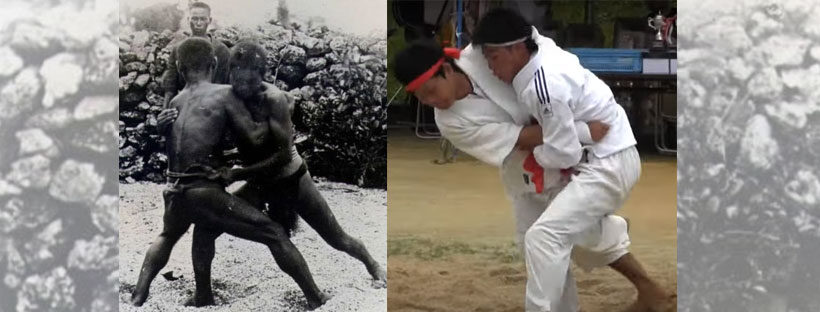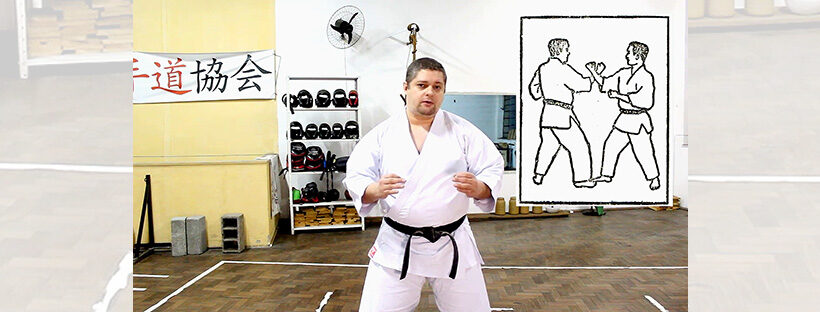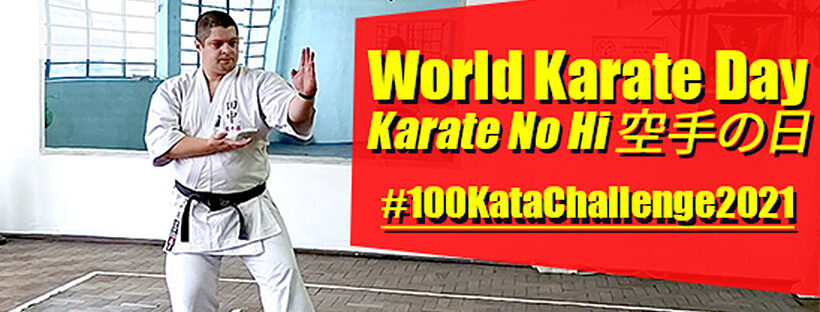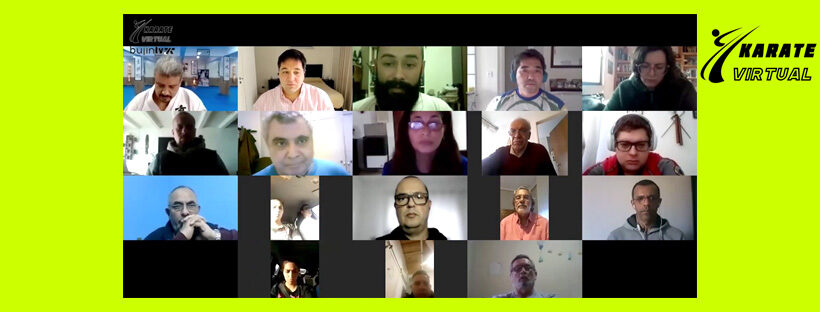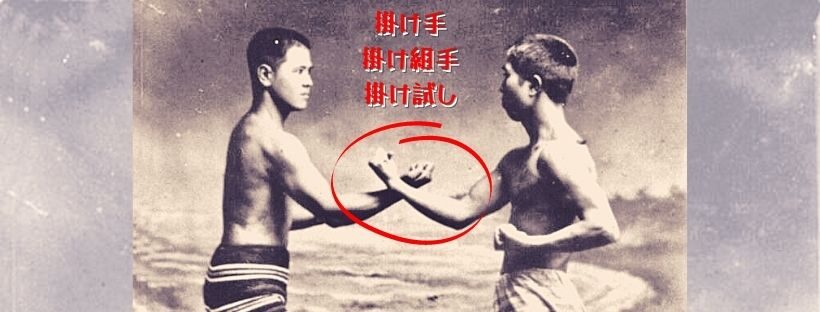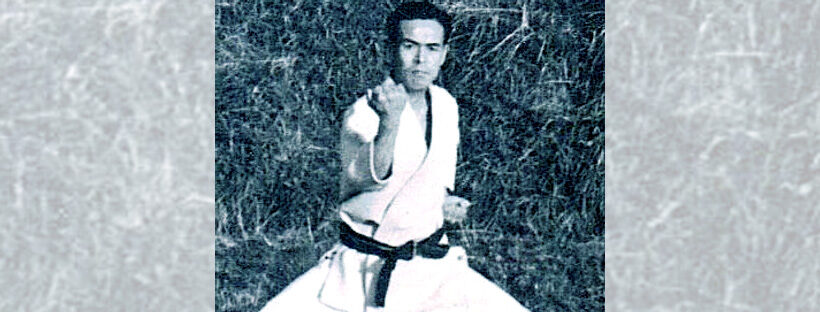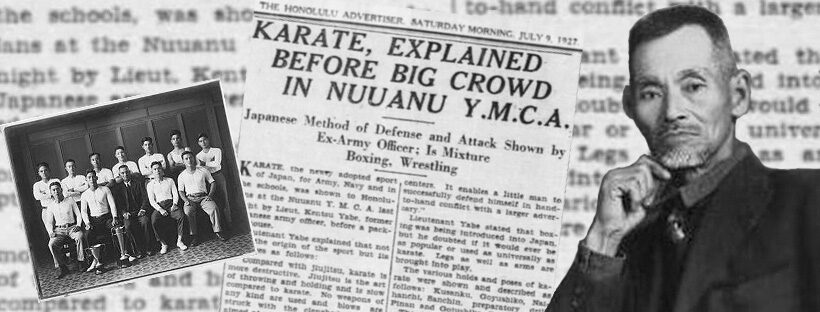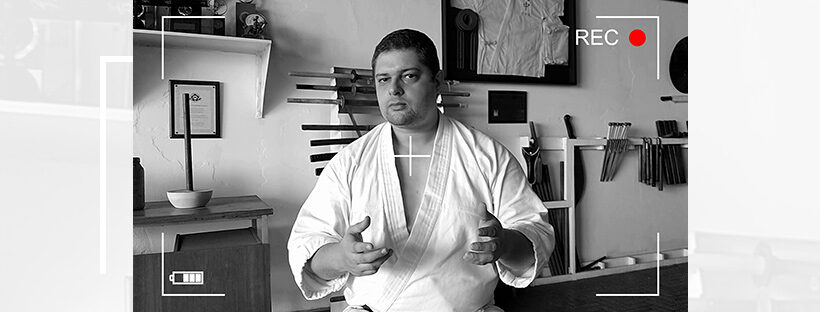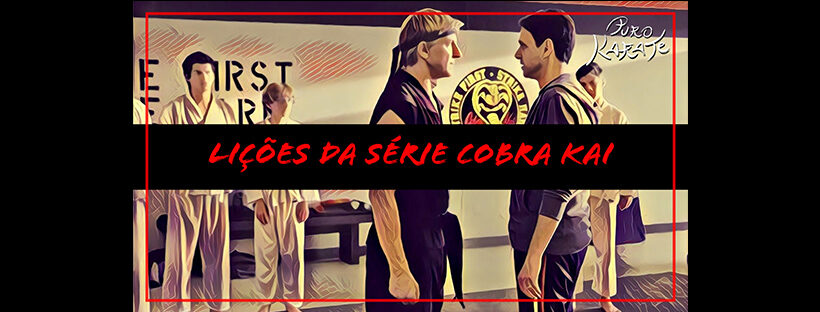Below, I recommend three texts by renowned Karate researcher Andreas Quast on Okinawan sumō and the term “tegumi”. Andreas touches on sensitive but very important points about the modern use of the term “tegumi” and whether there is a modern foundation for the popular interpretation. From what he indicates, there is evidence that a modern interpretation of the term “tegumi” has been wrongly taken as something historical, which is very important to clarify.
Continue readingCategory: Blog-en
Ten great benefits of Karate practice
I reproduce here a text I wrote in July 2016, originally for the Tanaka Karate-Do Association website (although many people copied it later without authorization). Talking about the benefits of Karate is always very important, as this is an art for preserving life above anything else!
Video: Summary of the concepts of kakedameshi, kake-kumite and kakidī
#100KataChallenge2021
Today, October 25th, is a special date for all karateka: it is Karate No Hi, World Karate Day, established in 2005 by the Okinawa Prefecture. The date was chosen because it was when, in 1936, an important meeting of masters took place to define the direction of the art, including discussing the change of the name “Tōdī” to “Karate-Dō”.
Continue reading
Recommendation: Karate Virtual, a learning space for practitioners around the world
Karate has always been an art that values the constant search for learning. This was even defended by great patriarchs like Gichin Funkoshi[1] and Chojun Miyagi[2]. So it’s always great when karateka get together to share information in an open, receptive and respectful way. I say more: it is fundamental. Karate is currently not just one, but many, and to understand it broadly we must actively seek and share knowledge. This exchange elevates and strengthens Karate.
Continue readingARTICLE | Kake-Kumite/Kakedameshi: The original free sparring of Karate
Have you ever heard of kakedameshi, kake-kumite or kakidī? These are historical concepts of Okinawan Karate, which help us to understand the original and little-known dynamics of our art. In the following article I will explain these concepts.
Continue readingMay 14: Birthday of master Seiichi “Shikan” Akamine
May 14 marks the birthday of master Seiichi Akamine (stage name in Japanese Yoshitaka or Chinese Shikan), born in 1920 in the city of Naha, Okinawa. Akamine is one of the pioneers of Karate in Brazil and South America, having founded the first legally established school in the country, the Brazilian Karate Association (Associação Brasileira de Karate – ABK). He is also considered an introducer of the Goju-Ryu style in Brazil, despite having a slightly different curriculum from the more traditional schools of that lineage.
Continue reading
Account about Kentsu Yabu in Hawaii, in 1927, describes Karate as a ‘mixture of boxing and wrestling’
Recently, the karateka Gary Suley shared two noteworthy historical records with the Karate community, despite not reporting any recent discovery or unknown facts. These are two newspaper clippings about a presentation that okinawan master Kentsu Yabu (屋部 憲通, 1866-1937), a student of Sokon Matsumura and Anko Itosu, made in Hawaii in 1927. Apparently it is one of the first records of the term “Karate” made in English, even before the master meeting that took place in 1936 to change the kanji of art from 唐手 (Tode/Karate, chinese hand) to 空手 (Karate, empty hand). Continue reading
Video: Anachronisms in Karate
This video is “deleted content” from the material I recorded for the video about the Cobra Kai series. As it escaped the main theme a little, I ended up editing it out, but I believe that the discussion itself is very valid.
We cannot train in a certain way simply “because so” or because we consider it “hard”. We need to look for foundations for what we train and teach, from the purpose of the exercises themselves to how they affect our bodies.
Training done in any way can hurt rather than strengthen, leave sequelae instead of helping our well-being or being harmful in the long run. Our brain was not designed to be hit, for example, and this can have serious consequences.
Of course, there are exercises with more contact, more demanding or that leave you with some bruises on your body for a few days, this is natural. But violence for violence is masochism and training without foundation is irresponsibility.
What karateka can get from the Cobra Kai series
[Video at the end of the post]
You may have noticed that lately there has been a lot of talk about the Cobra Kai series, which deals with events 30 years after the classic trilogy of the Karate Kid films. I started watching it in 2018, when it came out on the platform that was YouTube Red at the time. At the time the reception was good, but since the first two seasons were launched on Netflix, in the middle of 2020, the reach was much greater and the repercussion it was great. Now with the third season, launched in January 2021, we see this happening again.
With the success of the series, people naturally began to become more interested in Karate and to look for schools of Karate, mainly in a lower age group, of children and adolescents. According to news published by the Omelete website, Karate searches grew 75% in comparison between January 2021 and December last year, 2020. January this year became the month with the greatest interest in Karate since 2014! This is very significant. The series brought new eyes to our martial art.
Although we are not in the best time to fill the dojo and make a massive promotion of Karate, I believe it is important that we receive these people who have been interested and who want to start training with usas far as possible, guiding the best way for them to understand what true Karate is. What can be absorbed from the positive of the films and the series and what is not part of the reality of a dojo, what is not part of the daily training.
So, I believe that there is an important reflection for Karate teachers at this moment, not only to guide people who are coming now, but even for students who have watched the Cobra Kai series and have enjoyed the content: we need show the essence of Karate for these people and what they can get out of Karate training.
In my opinion, the best way to do this is not directly harnessing what you do in the dojo with which it is shown in the series, because it is one thing is a fiction, an entertainment work, another thing is the real Karate, which requires a certain seriousness in the way we are going to transmit this to other people.
You can, of course, take advantage of the wave of popularity of the Cobra Kai series and other media works about martial arts and Karate, but it takes a little bit of balance not to mix things up and not say that you are teaching Cobra Kai because that is not what happens. Cobra Kai is a work of fiction. The fact is that real Karate is much broader and much more fascinating than shown in the series.
Some points that I think are worth thinking about:
1. Karate shown in the Karate Kid and the Cobra Kai series is in no way intended to be a true portrait of Karate. It is a romanticized and even a little childlike view of the dynamics of a dojo and Karate training. They put on funny exercises, a student with less than a year of training to compete as a black belt in a tournament… and we know that the reality is not quite like that. And that’s okay, because that’s not the purpose of the series.
The purpose of the series is to be inspired by Karate to create a narrative that is entertainment for people. So, obviously it is not a series or film focused on showing the real Karate. There are works a little closer to the dynamics of Karate, documentaries, but this is not the case with Cobra Kai.
The series simplifies many of the methods we see in the dojo, such as kihon training, which is the repetition of movements, and kata, a fundamental element of Karate that not get even close to the attention it deserves. We see a little bit of Seienchin/Seyunchin kata in The Karate Kid Part III film and also in the Cobra Kai series, but just small bits and not so faithful to the mechanics of the kata.
The elements are used to bring a romantic vision of what is being done, to show a more Zen Karate in the case of mr. Miyagi’s. The Cobra Kai school, on the other hand, illustrates the idea of entering in line, doing something more military, which even in some resembles the discipline of the dojo and how we align ourselves to do kihon and basic exercises, but in a very superficial way. We must make it clear, especially for the younger ones, that the Karate in the series is one thing, a vision for entertainment, and another thing is the real Karate that requires effort, commitment and study.
Now, even so, being a series of fiction and having a lot of caricature about Karate, it doesn’t mean that we can’t take good things and reflect on it in the dojo or when talking to someone about Karate.
2. I believe that Cobra Kai and Karate Kid absorb well are some philosophical aspects of Karate. One is about balance, which is much talked about even in the first film. It is not just about making a correct stance, having balance in a technique, but mental balance for you to be able to deal with situations in the best possible way, always following the most reasonable path, the most thoughtful path, knowing the time to step back and know time to move foward.
When we think about extremes, that is even something that Daniel San himself has difficulty assimilating, you end up either making mistakes by omission or by excessive attitude, by aggressiveness. The Cobra Kai school is a lot about the aggressiveness side: “strike first, strike hard, no mercy”… Because there is no nuance behind it, no balance in what they do, because it is very literal, they end up actually becoming real scumbags, because they do harm to others and also to themselves.
On the other hand, when you need to take action on a problem and you are only defensive, you can aggravate a situation exactly because there was no assertive attitude. So you see that in this case of balance, the middle path is very important.
You can also see a little of this dichotomy in the film Kuro-Obi, Black Belt, in which we see two Karate practitioners, heirs to the same master. One is completely aggressive and impulsive and the other is completely passive, he only thinks about defending or not using his Karate at all when it is necessary, with that he also harms the people around him.
3. Another lesson shown in both the Karate Kid and the Cobra Kai is about overcoming fears and facing problems. In The Karate Kid Part III there is a very iconic scene, which is even remembered later in the Cobra Kai series, in which mr. Miyagi speaks to Daniel Larusso, when he is being beaten in the tournament, that he can lose to the opponent, but must not lose for fear.
Winning is sometimes much more than winning a trophy, winning an argument or imposing your point of view and it is much more about moving forward despite the odds. We may have insecurities and nervousness to do an exam, to present a kata or to do a kumite with a partner: these feelings that we have during these situations are also life-long learning.
The belt exam, I usually speak to the students of our dojo, is not only a matter of assessing the student’s knowledge, but also for the student to have this nervousness situation, different from everyday training, for that he can overcome and show what he knows show and what he learned during the entire training time despite these difficulties, despite that little chill in the belly. This is another point that if we reflect and draw parallels with dojo we will see that it is a very valid teaching to bring the series to real life.
4. Another thing that is also a little related, spoken at a certain moment in the series in the third season, is that defense takes on many forms. This is a question that has everything to do not only with the technical part but also with the philosophical part of Karate: sometimes, defense is a point of view.
Sometimes the best way for you to defend yourself is to attack the first, just like in the Cobra Kai motto. There is even a debate around one of Karate’s most well-known precepts, which is Karate ni sente nashi (空手に先手無し), “there is no first attack in Karate”. One of the best known masters of the beginning of the population of Karate, Choki Motobu, even went so far as to say that in fact Karate is attitude, that Karate is SENTE.
From a philosophical point of view, you will do everything possible to avoid using violence, aggression, in some conflict situation, but, from the moment you feel threatened, that you see that there is no alternative, then you will apply what you need, with the strength you need, so that the situation is resolved as soon as possible. This also has to do with determination and balance, because karateka cannot falter: he has to do the best he can to prevent the worst from happening.
5. One more interesting factor that can be recalled from the series as a lesson for our life is that Johnny and Daniel are still very attached to things from the past, things that were done 30 or 40 years ago. Because they cannot overcome this, they live in a situation that ends up harming their own students.
We cannot have an anachronistic mentality regarding what we do in Karate. Logically, Karate is an art passed down through generations and we need to understand the teachings of Karate so that we can apply it in our own training. But, at the same time, nothing prevents us from analyzing this in a critical way to understand what is the best way to apply these teachings from the past, if there was any distortion along the years and what can be improved too, why not .
So it is important to understand what you are doing to be able to apply this. As in the series, your Karate has to adapt to the times without losing the root, but bringing what is good, that will help you and that will help your students to live better.
6. The Cobra Kai series also illustrates that Karate can make you a better person. Johnny Lawrence, the protagonist of the series, who was a villain of the first Karate Kid, begins the story in a very bad situation in his life. As he takes up Karate again and starts teaching other people, mainly Miguel, who he takes as a pupil in the same way as mr. Miyagi took Daniel San, and begins to teach Karate so that he has more confidence and balance in life, Johnny himself realizes that he needs to improve as a person and that the Karate he transmits also needs to evolve so that the people he teaches be better people too.
Of course, in real life it is different, but the idea that Karate can even help you to be a better person certainly remains. Karate does not guarantee that you will automatically improve, but you can take the teachings of Karate and apply it in a way that helps you in many ways to be a more confident person, who knows how to impose himself at the right time, who knows the importance of discipline and dedication to achieve your goals, who knows how to respect other people and who knows how to listen.
You can get all this out by keeping a constant Karate training, but you need in your head, consciously, to be willing to absorb the teachings and apply them in your life. Karate is a tool: it will not solve your problems, what you take out of Karate can help you both improve as a person and solve some issues.
7. Finally, people talking about Karate is really good. Karate’s popularity has grown so much due to the Cobra Kai series that it cannot be viewed in a negative way. Here’s the question whether you’re getting the best out of it or not. If you know how to separate fiction from reality and use the reflections that are brought by the series and the films to make this a learning tool for your dojo and for yourself.
Works that depict Karate and the oriental martial arts are always very welcome. We have a lot of kung-fu and samurai movies, but we don’t have that much about Karate. There are some good films, but they are few, so series like Cobra Kai can even be a trigger for this type of work to be more current and also for people to be more interested in understanding what this Karate is, researching and discovering that the Karate that actually exists is very broad, that has a number of different approaches, and that has a very fascinating and very rich history that no series has managed to explore yet.
8. It doesn’t matter if a student came to Karate through a series, a drawing or some other medium. The important thing is the Karate that you show in your dojo. If you are managing to convey what Karate really is and also convey that there are several interpretations.
If you can pass on to him that Karate is not a mysterious art, but a very important cultural legacy of the people of Okinawa, the ancient Ryukyu Kingdom, which had a great cultural and commercial convergence mainly with southern China and that, combined with practices local plus external practices, which came about because of these commercial and cultural exchanges, has resulted in a unique art for self-defense of both body and mind.
Real karate is much more fascinating than any TV series or movie, but being able to see works related to Karate and martial arts is always a very pleasant and very welcome thing, which always opens the way for a lot of reflection. So, I see the launch of Cobra Kai with very positive eyes.
And I hope that other series related to Karate and the history of masters will come. We will enjoy the best that we can in this positive moment of Karate and also have fun watching the series and reviewing the films, which are certainly a very nice experience. The films are classic precisely because they have great cultural and historical relevance.
